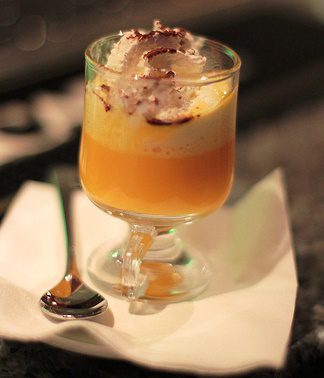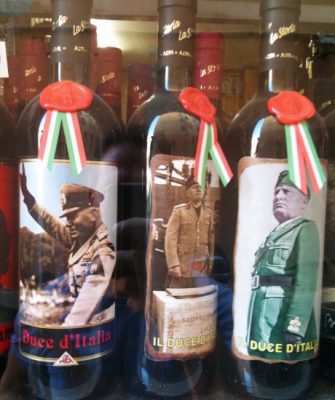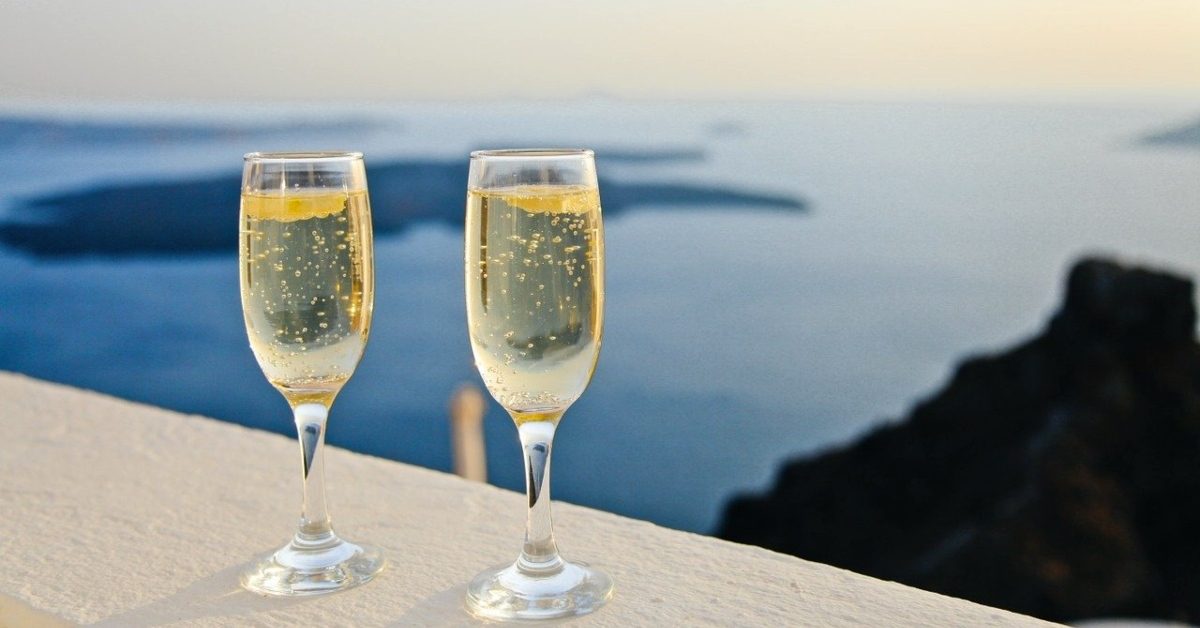This week in Italy, and all over the world, holiday celebrations are in full swing. And where there are parties, of course there are plenty of alcoholic libations. However, drinking in Italy is not the same sport as found in other (read: English-speaking) countries. Because the truth is, Italians are not really “drinkers,” per se. At least not in the way that an American understands the concept.
I’ve said it before, but it’s worth repeating: In Italy, alcohol goes with things, and drinking to get drunk is not an acceptable form of recreation. Indeed, public intoxication brings shame on yourself and your family, unlike in Anglo cultures where the same behavior earns praise and admiration from your friends down at the pub.
Still, there are plenty of potent potables to enjoy in Italy, but you have to be selective. Sticky sweet cordials abound. “Vino sfuso,” or table wine, while conceptually appealing, is by and large horrible (more on this later). And nobody in Italy knows how to make a proper dry martini.
No, italiani, you can’t just pour Martini Bianco in a glass with an ice cube and call it a cocktail. Vodka or gin is required, and in a much great proportion than you all seem to believe. The vermouth should merely be “introduced” to the spirits, preferably by the drop. Or, as Churchill used to proclaim, just a small nod of acknowledgment from the other side of the room constitutes sufficient involvement on the part of the vermouth.
However, if you have a look around at what the folks are drinking in Italy this time of year, there are a few interesting winter traditions of note.
Drinking in Italy during the holidays
Vin Brulé: this is a holiday favorite in the north of Italy, similar to what English-speaking countries refer to as mulled wine. According to my friend Paolo (a.k.a. “Quatrofromaggio”), “The practice of mulling wine goes back to medieval times, probably as a way to use up low quality or spoiled wines. Mulled wine has then remained popular as a comforting winter drink and as a remedy for colds and flus. Its curative effects have since found confirmation in the anti-inflammatory properties of red wine and in the high content of antiseptics and antioxidants of cloves and cinnamon.”
However, as I’ve already mentioned, Italians aren’t particularly keen on recruiting this concoction as a means to getting inebriated. As Paolo further points out: “Vin Brulé is usually boiled until no alcohol remains. Mulled wine, instead, is only warmed up for a short amount of time and at a lower temperature to preserve the alcoholic content. Occasionally, a shot of brandy or sherry is also added at the end for an extra bite.” No big surprise there.
Cioccolata Calda: this not the “Swiss Miss Instant Cocoa” of your childhood, and thank goodness for that! Italian hot chocolate is a warm, thick, delicious treat. Not really a beverage so much as a smooth, rich, pudding-like dessert. So yes, you’ll need a spoon and not a cocktail straw. But be warned: while delicious, it’s also very filling, so a little goes a long way. You just need enough to warm up your insides and indulge your taste buds in the chocolaty goodness.
 Bombardino: this drink is really “the bomb!” (sorry, couldn’t resist). It’s especially popular in and around the ski resorts this time of year. It is made by mixing 1/2 Advocaat (or eggnog, if you must) and 1/2 Brandy. It is served hot and with whipped cream on top. There are variations that include the adding of coffee, rum, or, whiskey. The “calimero” version is one part Brandy, one part Vov (an egg-based liqueur), and one part espresso. A couple of these will send you back up to the top of the slopes, and then down the double black diamond trails like a bomb. The mix of high heat, high alcohol, and high caffeine will have you exclaiming, “Wow! È veramente una bomba!”
Bombardino: this drink is really “the bomb!” (sorry, couldn’t resist). It’s especially popular in and around the ski resorts this time of year. It is made by mixing 1/2 Advocaat (or eggnog, if you must) and 1/2 Brandy. It is served hot and with whipped cream on top. There are variations that include the adding of coffee, rum, or, whiskey. The “calimero” version is one part Brandy, one part Vov (an egg-based liqueur), and one part espresso. A couple of these will send you back up to the top of the slopes, and then down the double black diamond trails like a bomb. The mix of high heat, high alcohol, and high caffeine will have you exclaiming, “Wow! È veramente una bomba!”
If you want to read some more interesting winter drink recipes, check out this article from my friends at Italy Magazine:
http://www.italymagazine.com/featured-story/taste-christmas
Vino della Casa
| “Oh, tu, caraffa di vino, nel deserto con la bella che amo,”disse il vecchio poeta.”Che la brocca di vino
al bacio dell’amore aggiunga il suo bacio.” |
“Oh, thou, carafe of wine, in the desert with the beautiful one that I love,”sung the ancient poet.”Let the jug of wine
to the kiss of love, add its own kiss.” |
–Pablo Neruda

You’ll often hear tourists claim that, while eating at a quaint little trattoria in Trastevere, they drank the house wine and it was wonderful!!! Sadly, this is rarely true. We want it to be true because it satisfies a role in our “la dolce vita” fantasy. We want to go back and tell our friends about the amazing table wine that we drank for just 2 Euros a glass! No added sulfites! No headache the next day! But in reality, drinking the house wine is equivalent to drinking water from a garden hose. It quenches your thirst and it’s usually potable—but only just.
Tiny Bubbles
But speaking of the frizzante wines, which are the best Italian varieties to ring in the New Year? Of course, you could just go for traditional French Champagne. But Italy offers a wide range of bubbly wines that are just as tasty and festive. And much less expensive, too.
Everybody knows about Prosecco, which comes from the Veneto region and is made from white grapes called, not surprisingly, “Prosecco,” or sometimes “Glera.” Most Prosecco wines are meant to be enjoyed young and fresh, so don’t think that you should look for a particular “classic” vintage the way you might with a French Champagne. The most famous area for this wine is Valdobbiadene (Italian pronunciation: valdobˈbjaːdene), in the hills north of Treviso, if you want to impress your dinner guests.

Prosecco is produced in either the fully sparkling (spumante) or lightly sparkling (frizzante) styles. Prosecco spumante, which has undergone a full secondary fermentation, is the more expensive variant. Some of these wines may also contain some Pinot Bianco or Pinot Grigio grapes. Depending on their sweetness, Proseccos are labelled “Brut” (up to 12 grams per liter of residual sugar), “Extra Dry” (12–17 g/l), or “Dry” (17–32 g/l).
Asti (or Asti Spumante) is a sparkling white Italian wine that is produced throughout southeastern Piedmont, but is particularly focused around the towns of Asti and Alba. It is made solely from Moscato Bianco grapes and therefore it’s one of the sweetest sparkling wines of Italy. Its inherent sweetness, frothy bubbles, and low alcohol content make it well suited to be paired with dessert. Unfortunately, it has never been considered a prestigious wine because most Asti Spumante consumed abroad is of low quality, giving it an undeserved bad reputation. When in Italy, give it a try and you might acquire a newfound respect for this underrated bubbly.
Fragolino has an interesting history and this little wine is somewhat of a troublemaker for a few reasons. First of all, its appeal is sneaky and can bewitch the unaware drinker with its strawberry-like aromas. Kind of like those silly wines that gave you your first hangover in high school. It is made from a dark, purple-skinned vine called Vitis labrusca, or what Americans might know as the Isabella grape.
Now here is where this wine might actually get you into some real trouble. Why? Because technically it’s illegal to sell it in Italy. You see, Vitis labrusca is historically blamed as the American grape variety that carried the phylloxera plague to Europe in the 19th century, destroying much of Europe’s wine producing vines. Later, American phylloxeraresistant rootstocks were subsequently imported to Europe so that European vines could be re-grafted onto the resistant strains and resume their wine production. So now this wine is sort of the “vino non grata” in these parts. But if you’re feeling a bit frisky, go on, give it try!
(Note: While it is illegal to sell Fragolino in Italy, it is NOT illegal to produce it for personal consumption. Kind of like Absinthe in France or marijuana in Holland).
Buone Feste!
Well, that’s my little year-end round up of Italian-style celebration in a glass. Yes, drinking in Italy goes way beyond cheap table wine. I thank you all for reading my blog this past year and for offering your feedback in the comments section. Ciao!

I agree with Lyn. I live in Sydney, Australia and we need to change the culture/mentality some drinkers adopt that drinking as much as possible and becoming violent equates to a good night. Maybe some of the trouble spots in Sydney need to be legislated to include a small bite to eat, which is such a lovely tradition in Italy.
Yes, as you say, it’s a two-fold solution…including a bite of food with every drink, but more importantly, changing the cultural mentality. It’s the same in the States. Thanks for your comments!
When I was younger I didn’t get why countries like Spain, Italy and Greece didn’t really have bars, with solo stools to just go and sit (I was traveling alone a reasonable bit). But being of Greek decent I’ve discovered that as I grow older I really can’t drink without food, without getting a bit ill. Whereas with the Irish and northern Europeans, food is less necessary for them to process alcohol. I like the social aspect of drinking down south, but a good ole fashion pub is nice too :)…Rick, it’s been a pleasure reading your blog this year and learning more about so many fascists of beautiful Italy. Have a wonderful 2014!!!
I agree with you, Alex. The food/alcohol connection now makes perfect sense to me. But as you said, the atmosphere in a pub is hard to beat. I don’t think I’ll ever totally “convert” to the 100% Mediterranean ways.
It has also been my pleasure to follow your adventures this past year. I wish you continued happiness and success in 2014…ciao!!
Hi Rick,
I’m a bit late reading this, but I felt the “need” to comment. I am sort of fond of the Martini Bianco with ice and maybe a twist of lemon peel. I am one American who never caught on to the gin/vodka bit. And I must be lucky because the two restaurants I frequent most often have really good vina del casa, and I have never even thought to check a label. I order a mezzo and am quite happy with that and dinner. At home I sin by drinking cheap, but tasty wine, with ice!
Buon Anno!
Hi Joan, great comments! Yes, and I think you realize that almost everything that I say is a bit “tongue in cheek.” Besides, my Italian wife is on your side in this friendly debate, so I don’t even “win” in my own house! And finally, Buon Anno anche a te!
Hi Rick, We desperately need to have the same culture/mentality here in Australia. It is so bad here now, that people are losing their lives mostly from being bashed by someone in a drunken rage. Sad situation
Each time i am in Italy and I have a glass of wine in a bar etc they automatically bring me a small antipasto. Such a great idea.
Wishing you all the best for 2014 and lots of success with Andiamo in Sicily. Buon Anno Lyn
So true, Lyn. Yes, you’re right…the little bite of food with the wine makes perfect sense. Why don’t countries outside of the Med understand this?
Happy holidays to you and yours, as well! Ciao!!